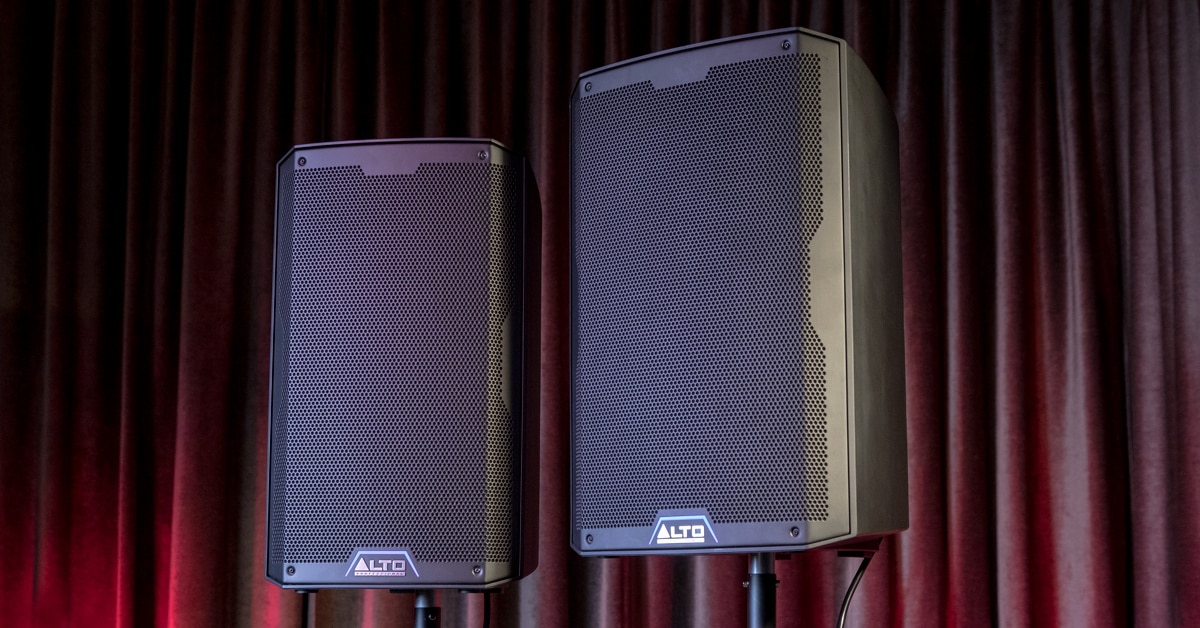From their debut, Alto Professional’s TrueSonic series of powered loudspeakers have delivered major bang for the buck. Delivering serious performance in a compact package, they've become major parts of small venues, rehearsal spaces and band vans everywhere. With the introduction of the new, fourth-generation TS4, Alto has added some serious new features to upgrade power, clarity and versatility. Alto Director of Product Development, Nathan Butler, who started with the legendary Eastern Acoustic Works as a product engineer, sat down for a chat with us about the new edition of these workhorse speakers.
The HUB: Can you give us a bit of the Alto Professional backstory? How does that inform the development of your loudspeakers, particularly the TS4, the latest generation of the TrueSonic family.
Nathan Butler: Ever since our founding in 2000, every Alto Professional product has been really focused on providing the user with a piece of gear that offers great value. Our customers can expect extremely high performance, with a high level of features at an extremely affordable price. Looking back on the history of TrueSonic, every generation—from the TS1 to the latest version we’re discussing today, the TS4—have offered that. I think TS4 takes that to the next level, with a lot of new features and functionality, sound quality and output. It really checks all the boxes.
The HUB: The last update to TrueSonic, TS3, was in spring 2018. Can you take us back to the first days of sitting down to plan out TS4?
NB: I think the big thing was really bringing TS4 into the modern era with Bluetooth and digital signal processing (DSP), and the two kind of go hand-in-hand. With those two new technologies in TS4, it offers the user some level of control through an app on their mobile device, whether that be a phone or a tablet. But that's really where everything started.
You mentioned 2018. That was a while ago, so I'd say these are long-anticipated development. We had obvious reasons why, namely COVID, these had a bit of a longer development timeline, but it all started with that ability to offer the user a little bit more remote access control over the speaker, and for us, the designers, to get as much bang for the buck out of the loudspeakers as possible. And having DSP onboard gives our team a much larger toolbox to work with than the traditional analog technology found in prior generations.
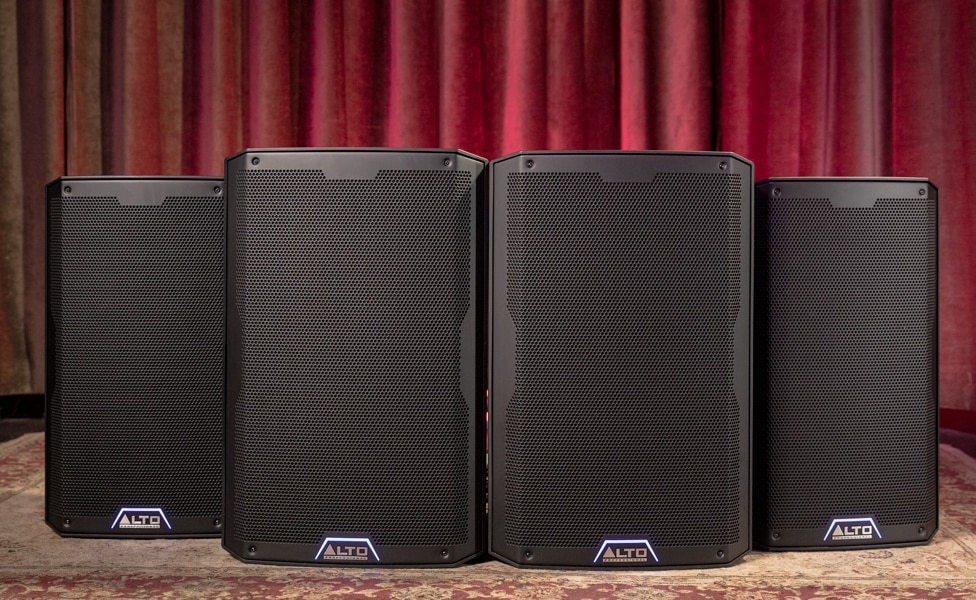
The HUB: Did that extended development time afford you the ability to develop TS4 further, or in a different way, than you had anticipated?
NB: Well, I don’t think there was ever an a-ha moment where we had to drastically change direction. During the development of any product, it’s rare, if ever, that you write a specification on day one, and then that specification remains etched in stone throughout the development cycle of the product. Now, that’s going to be the same whether it’s being developed over one year or three years. You're constantly evolving the spec in reaction to changes in the world. Obviously, you're looking at competitors. You're looking at market demands and market trends. We wouldn’t have brought the speakers to market if we didn’t believe that they offered the features and the performance that users are expecting today.
The HUB: Speaking to that, what does the DSP and Bluetooth mean for day-to-day use for a musician, or house engineer at a bar or club? What will they immediately notice, versus some of the improvements and benefits that are a little less obvious?
NB: Let's start with the app and the control from your mobile device. The design criteria for this was to not have it get in the way of the use of the loudspeakers. Fundamentally, TS4 is a tool meant to do a job. The app is there to give the user remote access to everything you can do on the back panel of the speakers, without having to stand right behind them.
One of the greatest features of the app is allowing the user to dial in a custom EQ, which can be done thanks to the built-in DSP. So, in addition to the three preset EQs, users can dial in their own curves on the app. That setting is referred to on the back panel as “Custom," which is set up via the app. When drawing a curve, there are six bands to control. Users can store any number of those custom curves in the app, and then upload one of the curves to the TS4 for recall at any time. In terms of actual use, that's probably the biggest thing they'll notice.
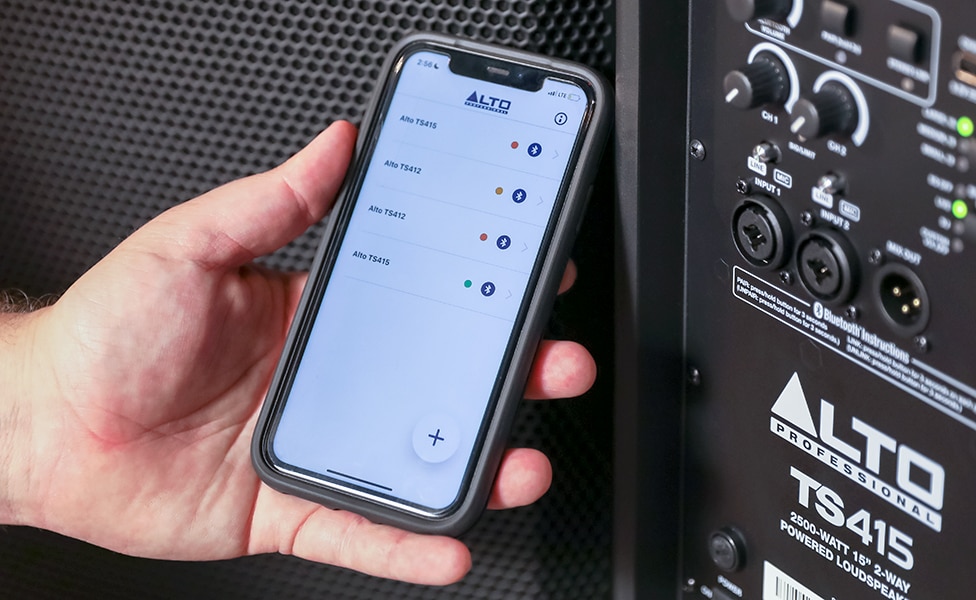
The HUB: That’s going to come in real handy as someone’s walking around a room trying to find the right setting during soundcheck.
NB: Of course. Yeah.
The next thing I was going to touch on is the True Wireless Stereo linking, also known as TWS. This gives users the ability to stream actual stereo audio from their device to the speakers, no cables required. If you're only using one speaker, if you stream from your phone or other portable device, it's going to be a summed-down mono sound of whatever you're streaming.
True Wireless Stereo linking involves pairing with one speaker first, and then linking the first speaker to the second, which gives you that true stereo sound. This is a bit of a step above and beyond in terms of Bluetooth capability, but it's a feature that we thought was critical to bring to this type of loudspeaker.
The other thing that really stands out, that won’t necessarily pop out in specs or an owner’s manual, is just going to be the sound quality. I think we all can appreciate the fact that you really don’t get to truly experience something like a loudspeaker until you have it and listen to it, much the same way you'd test drive a car perhaps. We've really put a lot of time and effort into dialing in the best sound possible and the best output from these new products. We think they're light years ahead of where the TS3 was. And not that there was anything wrong with the TS3 but, again, the signal processing that we have at our disposal allows us to do things to the sound character that analog circuitry doesn’t allow you to do. Everything from equalization to limiting, as well as control over the power being delivered to the transducers to really maximize the output has all been rolled in. And to your earlier point, we've had four years to do it.
The HUB: Can you tell us a little bit about the development testing environment?
NB: Sure! First, we have a laboratory in our offices in Rhode Island where initial design work happens, as well as a very large outdoor space that we use. Of course, loudspeakers sound very different outdoors and indoors, so that’s a great environment to test in.
We also have a whole building full of people that do everything from DJing to gigging in bands on weekends, so the TS4s have gotten around sufficiently over at least the last six-to-nine months, being used in a variety of different configurations and venues, for a variety of different purposes. It's all part of the development cycle.

The HUB: In the realm of portable PA systems, you’ve really got two different paths: Column line arrays and loudspeakers. Can you speak to why someone would want to go for this instead of a column line array?
NB: I think the strength of a typical PA cabinet is going to be your total output and pattern control. A typical column array is going to be inherently very wide. The narrow, vertical stacking of transducers actually creates a wide horizontal beam and a very narrow vertical beam. Now, that’s great for not impacting sight lines, but generally speaking, they don’t get as loud as a typical 12" or 15" two-way design. The 15" woofer moves a lot more air than an 8", 10" or maybe even 12" woofer down in a box on the floor. A high-output compression driver, as we have in TS412 and TS415, mounted on a directional horn, just offers a lot more throw, a lot more projection and a lot more output.
To be clear, there's nothing wrong with either one of them. They're kind of different tools for different purposes with different applications. You don’t really see stick PAs in large professional applications. You do see horn-loaded, 2-way loudspeakers, and even 3-way loudspeakers, in professional PA applications. So that's how I'd segregate the two.
The HUB: You spoke about how the design differences impact the audience, but does that impact how the band, or performer, is going to be able to hear themselves?
NB: Well, the wider horizontal dispersion of a typical stick PA might be great in a coffee house, or some other small setting. Think of a singer-songwriter type of application, where you might have audience members all over the place. But, it also has the downside, with that wider coverage, of potentially getting spilled back onto the stage or performing environment. And, if you're in a louder situation than perhaps a singer-songwriter scenario, with a lot of mics on stage with a lot of high gain, you're going to start running into feedback problems. The typical horn-loaded, 2-way or 3-way PA speaker concentrates a lot more of that energy into the audience, which prevents that bleed back onto the stage, which gives you more gain before feedback.
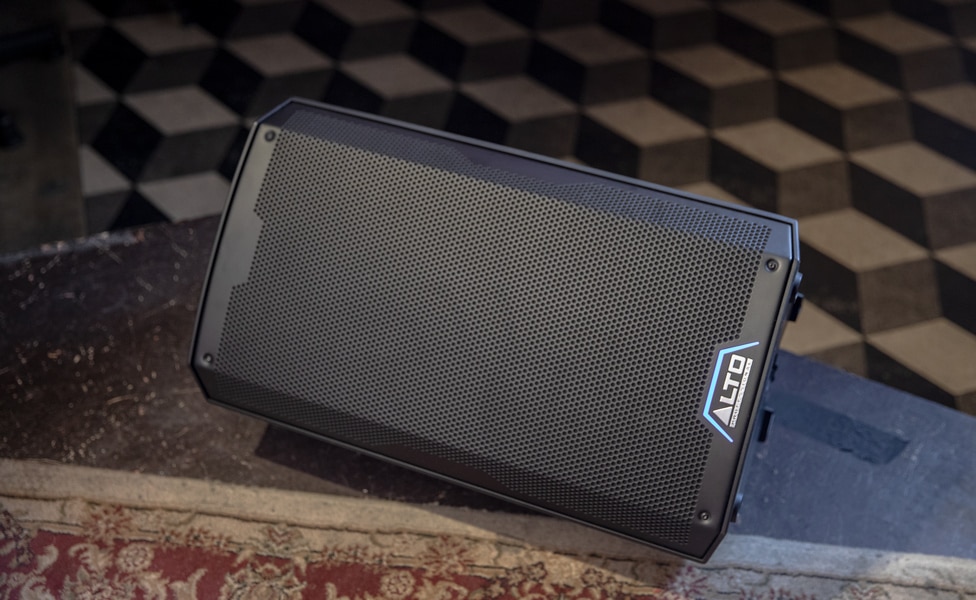
The HUB: And that’s going to give you a cleaner stage mix, right? I imagine that’ll impact your monitoring situation, because your wedges aren’t fighting with the FOH mix as much.
NB: Exactly. Actually, that's another interesting point. You can't use a column PA as a typical floor monitor.
The HUB: So, thinking of an environment where you might be using more than a pair of TS4s on stage. Maybe you’ve got two 15s for your FOH mix, and you’re using 12s for floor wedges. Can you speak to how the app control will work? Will each performer be able to access each speaker?
NB: If you're going to be using the app, you can individually and discretely connect that app to whichever TS4 speakers you want. Each speaker's going to show up on your phone or tablet as a separate device. So, you can connect to one, your monitor. Another member of the band can connect to his or hers. You can each have individual control.
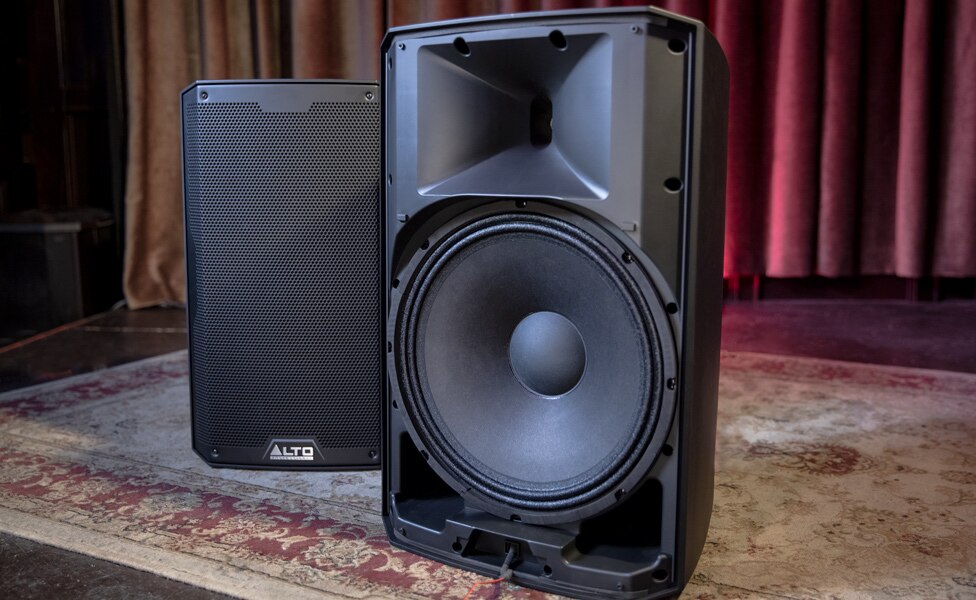
The HUB: So, there’s no risk of one person affecting the EQ settings on someone else’s monitor?
NB: That’s right.
The HUB: Within the app, you have the ability to select different sub sizes. I imagine that's tuned towards what Alto offers, first and foremost?
NB: Actually, it isn’t! We tried to keep it more generic. Essentially, what that control does is tune the high-pass filter, thinking of how that low frequency will perform on the top box, to mirror well with a typical response of a subwoofer of a specific size. Now, obviously it is geared towards what we do within Alto Professional, but for the most part, you’re going to get relatively similar frequency response and overall output from subs of the same size, regardless of who’s making them. Now, that’s directional, not exact, and doesn’t speak to other unique aspects or features of individual subs. So, we tried to split the difference and find the best universal performance across the three different sub sizes you can select from.
The HUB: That's very forward-thinking. Obviously, some users may already have a sub and may not have the budget to purchase an Alto one just yet, so this offers them great performance until they’re ready to add an Alto model to their setup.
NB: Exactly!





































































































































